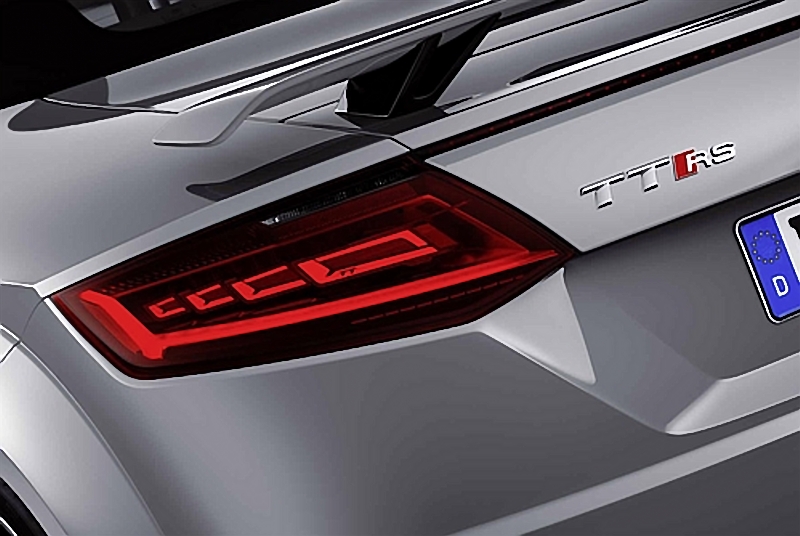Audi works with Osram on OLED tailights in sports car
12-11-2016
OLEDs — organic light-emitting diodes — are patches of material that emit light across their surface unlike LEDs, which are single points of light.
Osram announces that there is more business opportunity for organic LED recently, following a similar news with BMW.
Supporting this news that there will at least be good market opportunity for OLED lighting technology, Osram announced that a second automaker, Audi AG, is using its OLED rear lights in a production model.
Germany Osram said Audi is using the Osram OLED rear light module in the Audi TT RS, a compact sports car model.
Audi, part of Germany Volkswagen group, launched the car last spring in the year 2015, but Osram had not publicly proven that it is the supplier until now.
In July 2016, Osram announced a similar agreement with German carmaker BMW, which is using the OLED taillights in the BMW M4 GTS high-performance camper.
In thin form, they forcast a multitude of design innovations. As rear lights in cars, for instance, Osram says OLEDs can save space and can provide a variety of new looks such as a 3D effect when they are partially layered over each other in a linear arrangement. The Audi taillight houses 4 OLED panels, and the BMW has 15, all istalled inside a fitting.

Osrams OLED module brings up the rear on the Audi TT RS.
OLED do not cast any shadows and do not need any reflectors, light guides, or similar optics.It enables light sources to be designed in any shape and mounted on flexible carriers.
The color patterns can be assigned different functions, with some serving as brake lights and others a constantly lighting red taillight.
OLEDs are becoming increasingly common in gadgets and as television screens. Some fan believe they will literally go into the fabric of clothing, bridges, and buildings, changing things like fashion and architecture.
Several companies, including Osram, have given up on OLEDs as a general light source, as developers have struggled to make them as energy efficient as LEDs. Early this year, Osram CEO Olaf Berlien described OLEDs as "too expensive" to serve general lighting purposes, but said Osram would continue to study the technology for professional markets such as automotive. As far back as 2013, Osram had expressed that OLED technology would move into production automobiles by this year.
A year ago, lighting giant Philips completed the sale of OLED assets including its Lumiblade technology to OLEDWorks.
One company that remains devoted to the technology for general lighting is South Korean LG, which earlier this year announced plans to expand and modernize OLED production scale.


